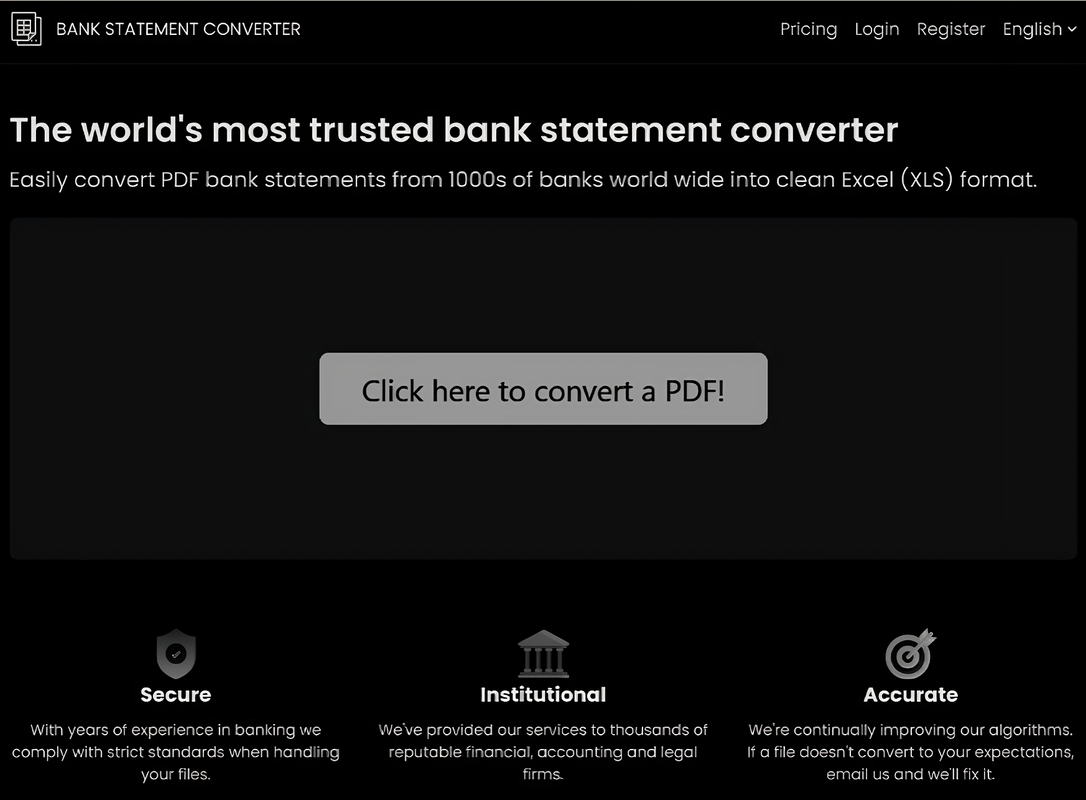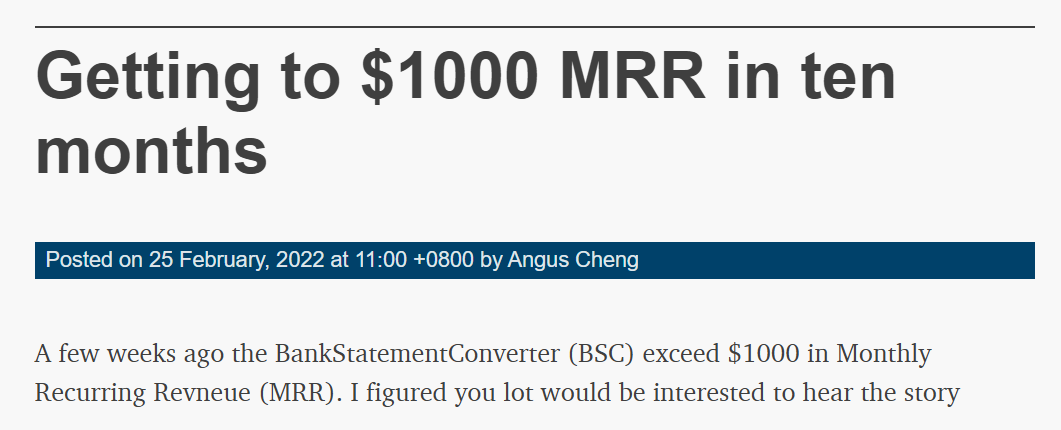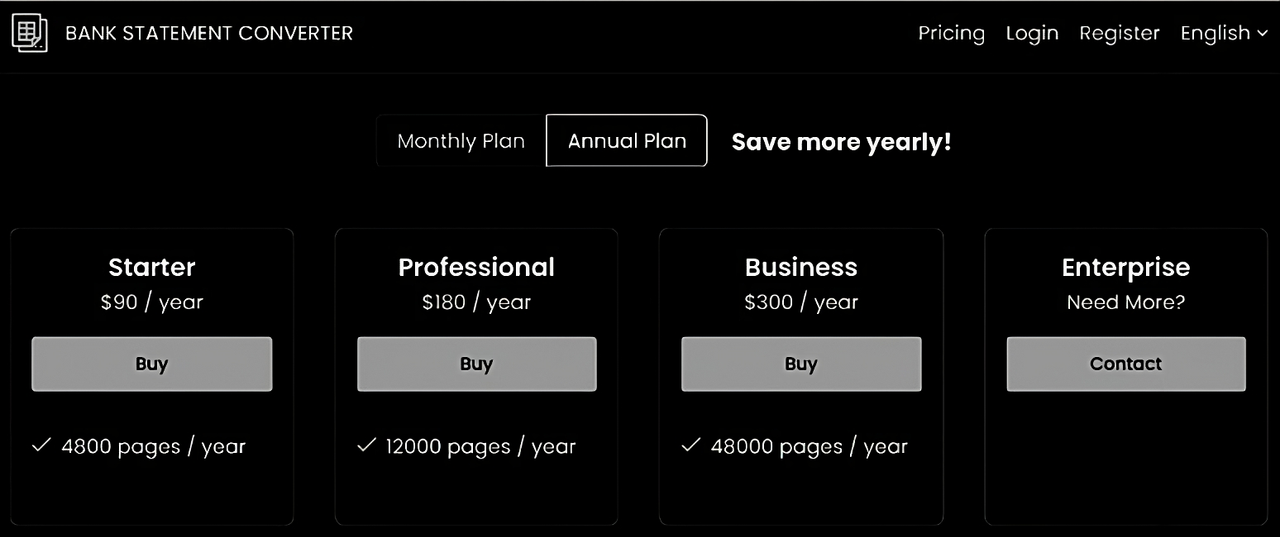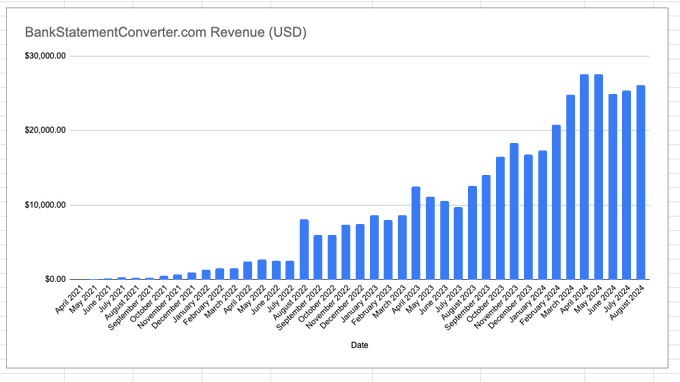

Earning $11,000 monthly by running a simple website with minimal effort.

Angus Cheng, a 35-year-old from Hong Kong, runs a web application that allows users to extract transaction data from PDF bank statements. The application, available at Bank Statement Converter, converts PDF bank statements from hundreds of banks worldwide into a clean Excel (XLS) format.
Between 2010 and 2013, Angus was an indie game developer. He then worked as a mobile game developer, moved to mobile app development, and later became a backend developer at an investment bank. After that, he joined a crypto exchange.
At the end of 2020, Angus became frustrated with his job and decided to work for himself. Soon after, he created Bank Statement Converter.

After quitting his job, Angus was looking for something to build. A friend wanted to collaborate, so they both searched for ideas. One day, Angus decided to analyze his expenditures and logged into his online bank account to find a CSV feed. Since the bank only provided PDF statements, he downloaded them and wrote code to extract the needed data. The process was time-consuming, taking about 10 hours instead of the expected one hour.
Realizing others might have the same problem, Angus pitched the idea of a web app that extracts transaction data from PDFs to his friend. His friend was interested, and they quickly developed a minimum viable product (MVP) and launched it. The first version of the website had no registration or payment options, with initial costs limited to the domain ($10) and an Amazon EC2 server ($10 monthly).
The initial 100 customers were acquired through Google Search Ads. The ad spend versus revenue:
Revenue: $248 from 10 users, Ad Spend: $858
Shortly after the first sale, Angus’s business partner decided to drop out, thinking the application was too boring and doubting its potential. The sales in these two months were one-off, with no recurring revenue. Spending $858 to bring in $248 was unsustainable, but it was the only way Angus could think of to attract users.
Revenue: $740 from 20 users, Ad Spend: $3050
Angus switched from selling page credits to a quarterly subscription of $20, leading to better conversions. He also improved the processor to handle scanned PDFs and non-bank statement PDFs.
Revenue: $4272, Ad Spend: $0
During this period, Angus came across an article that convinced him to start writing blog posts. He also raised prices and added monthly and yearly plans. The blog posts began bringing in traffic, and one post even hit the front page of HackerNews. Although no one from HackerNews signed up, the exposure brought backlinks and improved Google rankings.

Angus learned that content marketing was more effective than paying for clicks. Good content could bring in traffic for years, whereas ads stopped generating traffic once the payments stopped. It became clear that running ads was not a sustainable strategy.
Marketing Strategies
Angus Cheng has tried various marketing strategies to attract both initial and current customers. Here is a breakdown of his approaches:
Google Search Ads were quite effective initially, bringing users to the app immediately, which helped Angus improve the product and resolve errors. He ran these ads for about six months, spending approximately 1000 USD per month. However, he was spending $1000 on ads and only getting back $200. After six months, he decided to shut down the ads to avoid further losses.
Angus hired someone to collect email addresses for accounting firms and used a tool called LemList to template and schedule the emails. LemList allowed the scheduling of ten emails a day to users on the list, sent every thirty minutes between 9 AM and 5 PM. This strategy was employed for about three months, resulting in two or three sales. The return on investment was poor, estimated at $0.05 for every $1 spent. Eventually, Angus got banned from Google Workspace for sending too many emails.
Angus started writing blog posts because he heard it was effective. His strategy was simple: write content that people would enjoy reading. He avoided the cynical approach of targeting specific keywords and generating low-quality content. Although it was hard to calculate the return on investment, the blog posts led to good backlinks, pushing the website up in Google search rankings.
For those starting out, Angus recommends buying Google/Facebook ads to get users to the product and creating interesting content such as blog posts and YouTube videos.
Angus’s business makes money through monthly and yearly subscriptions, with plans ranging from $15 to $50 per month and $90 to $300 per year.

As of today, the monthly recurring revenue is 23,000 USD, with operational costs of around 1000 USD per month.

Tools he used to run the business include:
CrispChat: for on-page messaging
IntelliJ: for coding
Grafana: to track business metrics like sales
Angus prefers not to use web-based issue trackers like Jira, Asana, Trello, and Todoist, as they disrupt his workflow. Instead, he logs issues and feature ideas into a text file named TODO.md, checked into the root of his git repository.
A Typical Day in the Life of a Solo Founder
Angus dedicates one day a week to the business. He responds to user emails and support messages on CrispChat, addressing issues quickly. Often, users report glitches with documents, requiring Angus to create configuration files for accurate results. He works from home or a rented hot desk at a co-working space and primarily communicates with users who contact him via email or CrispChat.
Advice for Aspiring Entrepreneurs
To learn more about Angus Cheng and his business visit: